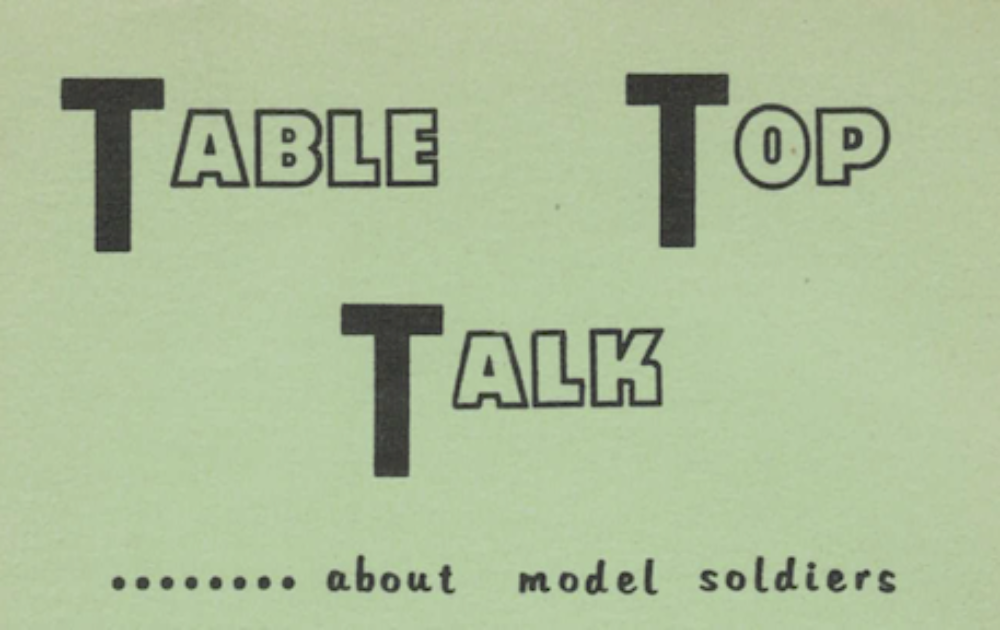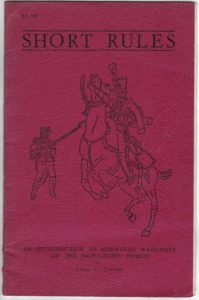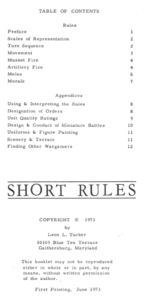Way back in the day, after playing Fast Rules (WWII infantry action by Leon Tucker and Mike Reese) I came upon an advertisement for Short Rules by Leon Tucker; I said to myself: If you like Fast Rules, you are gonna love Short Rules…
Well, it took me years to obtain a copy and when I did, I found that I was right! I do love the rules. I haven’t played them in a number of years, but every time I re-read them I’m all charged up and ready to fight some Napoleonic battles. The rules are nearly impossible to find these days, so if you find a copy snag it quick!
While, I’ve not recounted all of the rules, I do cover the main points; enough to give you a feel for the rules. So, grab a cuppa or a pint and find your comfy seat and have a read.
SHORT RULES
An introduction to miniature wargames of the Napoleonic period.
By Leon Tucker 1973
Scales of Representation
Miniatures: targeted at 25mm figures, based 3 to a stand (1.5” to 2” width).
With 4 stands to the basic battalion. Cavalry squadron is 4 stands with 2 or 3 figures.
Artillery, half-battery is a single gun and crew.
Distances: 6 inches represents approximately 100 scale yards.
Turn Sequence
Basic Version:
1) Active commander moves & fires weapons of stationary units
2) Passive commander makes defensive fire
3) Active commander fires weapons of units which moved or deployed
4) Units in physical contact conduct melee
5) Commander exchange Active/Passive roles
Optional Version:
1) Designate orders
2) Roll to determine which side carries out the first order
3) Commanders alternate activity one unit at a time until all are completed
Movement
Units may combine movement with other activity, however, movement will be reduced when doing so.
Basic movement capabilities:
Infantry 6” – Lt. Cavalry 10” – Hvy Cavalry 8” – Foot Artillery 6” – Hrs Artillery 10”
Musket Fire
Designate target unit. Stands in the same unit may fire on different enemy units. Only (detached) light infantry may target individual stands.
Each stand of musket fire is carried out by rolling a single die. The usual adjustments apply.
Ranges: (short/long)
Carbine 3”/6” – Smooth bore Musket 5”/10” – Rifled Musket 8”/16”
Casualties: (adjusted die roll)
1 or 2 = 0 – 3 or 4 = 1 – 5 or 6 = 2
Artillery Fire
Field guns may fire solid or grape shot. Must designate which type before range is measured.
Grape Shot is treated as several stands of musket fire. Ranges are: short, medium and long.
Example: 8 lbr. gun 7” = 2 trays – 14” = 3 trays – 21” = 2 trays
Procedure & modifiers same as Musket fire.
Solid Shot effect is much the same as being hit by a stand of musket fire. Standard and additional modifiers apply. Ranges are: short, medium and long. Guns have a penetration factor.
Example: 8 lbr. Gun 12”/24”/36” with penetration factor of 4
Can fire through 4 stands of troops or 1 fence and two stands.
Howitzers may fire over obstacles. Target range must be no less than 12” nor more than 36”.
Roll for Hit or Miss. A hit is the equivalent of 3 stands of musket fire.
Melee
Occurs when stands come into physical contact. Each stand in melee rolls a single die; apply adjustments… To survive the adjusted score must be 3 or more.
Morale
Whenever a unit suffers casualties it must check morale. Roll a single die, apply modifiers…
Result of: 0 or less, unit is routed – 1 or 2 unit is disorganized – 3 or more morale is unimpaired.
That does it for the basics. I can cover the Appendices a bit if anyone is interested.


